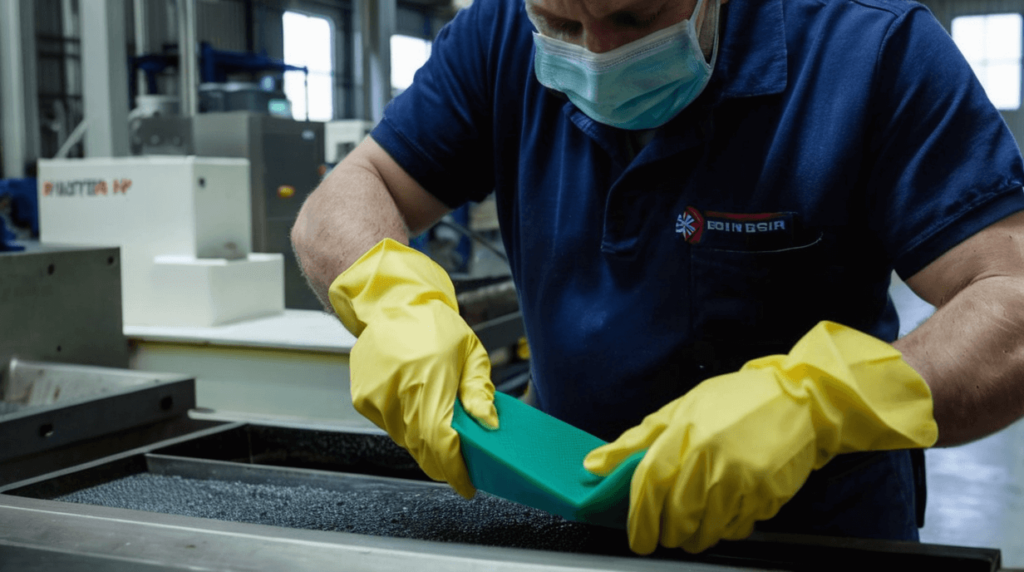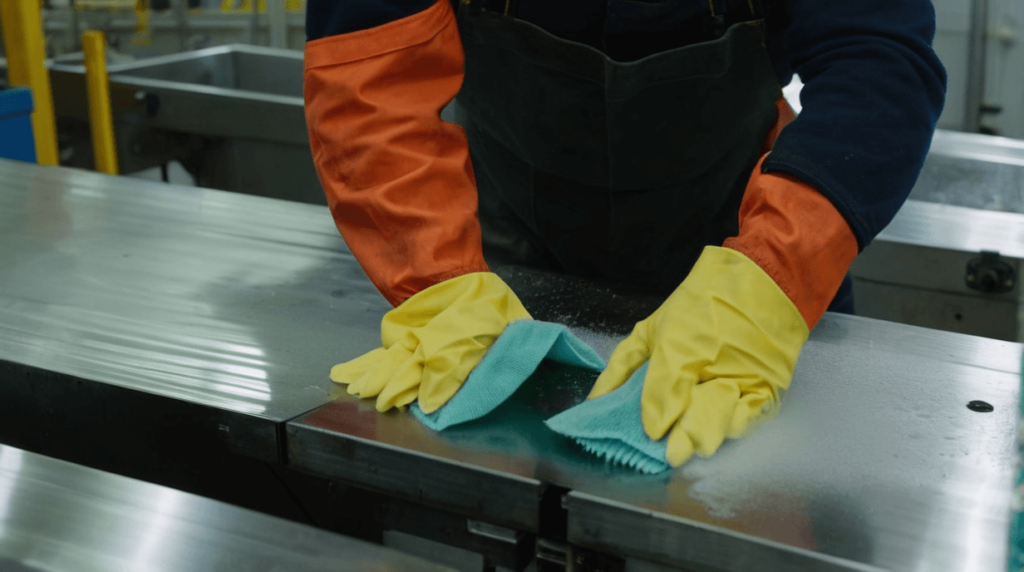Introduction
Mold maintenance is a critical aspect of manufacturing processes that often goes unnoticed until something goes wrong. Proper care and maintenance of molds are essential for ensuring product quality, improving production efficiency, and extending the service life of molds. Neglecting mold maintenance can lead to costly downtime, product defects, and increased operational costs. This comprehensive guide delves into the importance of mold maintenance, outlines basic principles, and provides detailed instructions on how to maintain and care for molds effectively.

The Importance of Mold Maintenance
Mold maintenance plays a vital role in several key areas:
- Ensuring Product Quality: Consistent maintenance helps in producing high-quality products by preventing defects caused by mold wear and tear.
- Improving Production Efficiency: Regular maintenance reduces the likelihood of unexpected breakdowns, thus minimizing downtime and ensuring smooth production processes.
- Extending Mold Service Life: Proper care can significantly extend the lifespan of molds, providing better return on investment and reducing the need for frequent replacements.
Basic Principles of Mold Maintenance and Care
To maintain and care for molds effectively, it is essential to follow some fundamental principles:
- Regular Inspection: Conducting frequent inspections to identify any signs of wear, damage, or contamination.
- Cleaning: Ensuring that molds are free from residues and contaminants that can affect product quality.
- Lubrication: Applying appropriate lubricants to moving parts to reduce friction and prevent rust.
- Storage: Storing molds in conditions that prevent moisture and corrosion.
- Repair and Improvement: Promptly repairing any damage and optimizing mold structure to meet production needs.
How to Maintain and Care for Molds
-
Daily Inspection and Cleaning of Molds
Surface Inspection
Daily inspection of mold surfaces is crucial. Check for any cracks, wear, or corrosion that could compromise the mold’s integrity. This step ensures that any issues are identified early and addressed promptly.
Cleaning
Use suitable cleaning agents to remove residues and contaminants from the mold surface. This practice ensures a smooth mold surface, which is essential for producing high-quality products. Avoid abrasive cleaners that could damage the mold.
Lubrication
Regularly apply lubricants to the moving parts of the mold. Lubrication reduces wear and tear, prevents rust, and ensures that the mold operates smoothly. Use the appropriate type of lubricant as recommended by the mold manufacturer.
-
Periodic Maintenance of Molds
Check Fasteners
Periodically check all bolts, nuts, and other fasteners to ensure they are secure and not loose. Loose fasteners can lead to misalignment and damage to the mold.
Replace Wear Parts
Certain parts of the mold, such as guide pins, bushings, and springs, experience wear over time. Replace these parts periodically based on the mold’s usage and the manufacturer’s recommendations to maintain optimal performance.
Precision Checks
Use measuring tools to check the mold’s dimensions and shape to ensure they meet design specifications. Precision checks help in identifying any deviations that could affect product quality.
-
Mold Storage
Storage Environment
Store molds in a dry, ventilated environment to avoid moisture and corrosion. Proper storage conditions are crucial for maintaining the mold’s integrity when not in use.
Protective Measures
Apply rust-preventive oil and use dust covers for molds that are not in use for extended periods. These protective measures help to prevent rust and contamination.
-
Repair and Improvement of Molds
Damage Repair
Promptly repair any cracks, chipping, or other damages to extend the mold’s service life. Delaying repairs can lead to more significant issues and higher repair costs.
Structural Improvements
Optimize and improve the mold’s structure based on production needs and usage conditions. Structural improvements can enhance production efficiency and product quality.
-
Record Keeping and Tracking
Maintenance Records
Maintain detailed records of each inspection, maintenance, and repair performed on the molds. Accurate records help in tracking the mold’s condition and scheduling future maintenance.
Usage Records
Track the number of uses and operational time of each mold. This information is essential for planning maintenance schedules and ensuring that molds are serviced at appropriate intervals.
Mold Maintenance Precautions
When performing mold maintenance, certain precautions should be taken:
- Use Appropriate Tools: Always use the right tools for maintenance tasks to avoid damaging the mold.
- Select Suitable Lubricants: Use lubricants recommended by the mold manufacturer to ensure compatibility and effectiveness.
- Avoid Collisions and Scratches: Handle molds carefully to avoid collisions and scratches that can affect their performance.
Mold Maintenance Cycle and Frequency
Establishing a reasonable mold maintenance cycle and frequency is crucial. Factors such as the type of mold, frequency of use, and production environment should be considered. A well-planned maintenance cycle ensures that molds are always in good working condition, reducing the risk of unexpected breakdowns.
Training and Guidance on Mold Maintenance
Providing training and guidance on mold maintenance for production and maintenance personnel is
essential. Proper training improves the professional knowledge and skills of the staff, reducing the risk of mold damage and ensuring that maintenance tasks are performed correctly.
- Regular Training Programs: Organize regular training sessions to keep the staff updated on the latest maintenance techniques and best practices.
- Guidance Materials: Provide detailed manuals and guidelines on mold maintenance procedures.
- Hands-On Training: Facilitate practical training sessions where staff can learn and practice maintenance tasks under supervision.
The Role of Release Agents in Mold Maintenance
Reducing Mold Wear
Release agents play a significant role in mold maintenance by reducing wear and tear. They create a barrier between the mold surface and the material being molded, making it easier to remove the finished product without causing damage to the mold.
Benefits of Proper Selection and Use
Selecting and using the right release agents can provide several benefits:
- Extended Mold Life: Proper use of release agents can significantly extend the life of the mold by reducing friction and wear.
- Improved Product Quality: Release agents help in achieving a smooth surface finish on the molded products, enhancing their quality.
- Ease of Cleaning: Release agents prevent materials from sticking to the mold, making cleaning easier and faster.
Optimization Suggestions for Mold Maintenance
Based on practical experiences and industry insights, here are some optimization suggestions for mold maintenance:
- Improving Processes: Continuously evaluate and improve maintenance processes to enhance efficiency. Implementing best practices and adopting new technologies can lead to better maintenance outcomes.
- Enhancing Equipment Performance: Regularly upgrade and maintain maintenance tools and equipment to ensure they perform optimally.
- Adjusting Personnel Arrangements: Assign maintenance tasks based on the expertise and experience of the staff. Properly trained personnel should handle complex maintenance tasks to ensure accuracy and efficiency.
Conclusion and Prospects
In summary, mold maintenance is a critical aspect of manufacturing that ensures product quality, production efficiency, and extended mold life. By adhering to basic maintenance principles, conducting regular inspections, and performing timely repairs, manufacturers can avoid costly downtime and improve overall productivity. The future of mold maintenance looks promising with advancements in technology and increased awareness of its importance. Continued focus on training, process optimization, and the use of advanced materials will further enhance mold maintenance practices.

